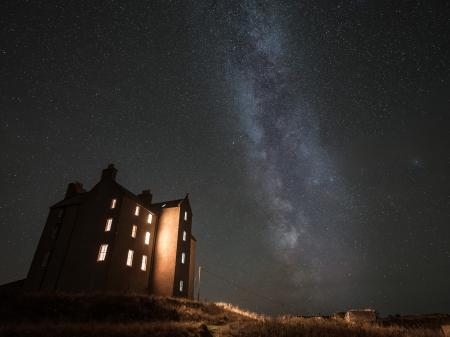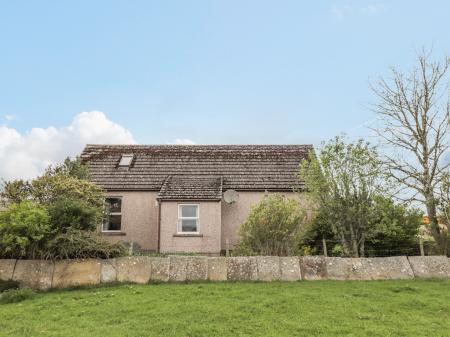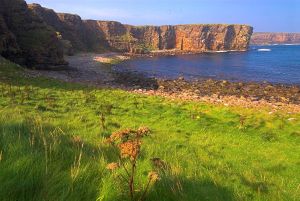
From the parking area at Deerness, the path passes The Gloup, a partly collapsed sea cave, or blowhole, linked to the shore by a landbridge. The word 'gloup' comes from the Old Norse 'gluppa', and means a chasm. The area around The Gloup is not fenced, and the cliffs are quite steep, so take care! You can hire boats and navigate up The Gloup if you have a yen for adventure.
From The Gloup the trail follows the coast to the Brough of Deerness, where a steep track up the headland brings you to an early Christian monastery surrounded by remains of a Norse settlement.
The Mull features a wide variety of seabirds, and seals and otters are frequent sights. The scenery is simply breathtaking, and the sound of waves crashing on the shore is in constant competition with the sound of seabirds screeching! This truly is a magical place, so typical of coastal scenery on Orkney.
The Covenanter's Memorial
The walk to the Brough of Deerness can be extended to visit the Covenanter's Memorial, dedicated to the memory of 200 Covenanters who lost their lives in a shipwreck here in 1697. The Covenanters were prisoners bound for exile in America, where they were to become slaves on English plantations. The prisoners were aboard the 'Crown of London' which set sail from Leith in December 1679.
The ship tried to shelter from a storm off the headland of Scarvataing, when the anchor chain snapped and the ship was driven onto the rocks. The captain and crew saved themselves by cutting down the mast and using it as a bridge to reach the shore. The prisoners were locked in the hold, unable to escape. One brave crewman cut through the deck with an axe and freed 50 of the prisoners, but the remaining 200 were drowned.
Of those who escaped, some were recaptured and were sent on to a life of slavery in the New World. Some found passage on a ship to Holland, and some, legend says, were surreptitiously allowed to stay on Orkney by the islanders.
In 1888 a memorial in the shape of a tall tower was erected on the shore, roughly 300 yards from the spot where the ship sank. It was paid for by public subscription and has a small bronze plaque at the base. Behind the plaque is a small cavity where a set of Jubilee coins were stored.






